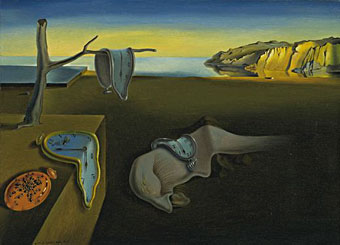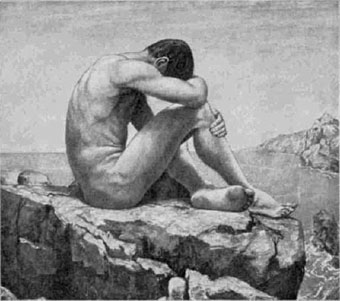
The Persistence of Memory (1931).
Forensic scientist uses DNA to explore Dalí’s bizarre genius
Samples taken from nasal feeding tubes could also help to authenticate works
James Randerson in San Antonio
The Guardian, Saturday, February 24, 2007
IT IS LIKE something from a surrealist still life—a hat, glasses, moustache and toilet seat. This is the collection of belongings that forensic scientist Michael Rieders was offered when he put the word out that he was trying to track down Salvador Dalí’s DNA.
“I have been fascinated by Dalí and his artwork since I was around 11 years old,” he said. “I found it hard to believe that a person could come up with such exotic, bizarre art.”
By tracking down Dalí’s DNA he felt he could get closer to the surrealist artist. But more than that, he hoped that if he could characterise Dalí’s DNA fingerprint, he could use it to help authenticate the handful of paintings and artworks that are not signed but are claimed by some to have been painted by the Spanish master.


